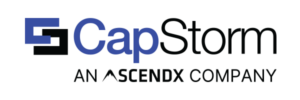
How to Secure A CS:Govern Database
This article is about securing your CopyStorm data at the field level using CS:Govern, as well as recommendations on securing the target CopyStorm database. Fundamentally, the basic essential steps are the following:
- Manage access to the Database. This is an action taken by the Database Administrator.
- Manage access to specific fields within a table through users and roles. These are actions taken by the CopyStorm/CS:Govern user.
- Remove all access to the Encryption Keys. This is an action taken by the Database Administrator.
It is suggested that the customer use their own Security Standards and Knowledge to append and/or replace the basic Security Architectural Design offered in this article.
Securing a CS:Govern database is the process of ensuring that only database users granted rights by CS:Govern can access decrypted values of fields.
For any user to be able to access decrypted data (where they have CS:Govern rights), execute access to a single function (per table with encrypted data) is required.
- To access decrypted data in table “Contact” a user will need execute rights on the function guardContact_GET().
- By default, CS:Govern grants public execute rights to all generated _GET functions and hides others.
- Each _GET function enforces access policies set up by CS:Govern .
- If a user accesses an encrypted field WITHOUT using the corresponding _GET function, they will always get the masked value for the field.
As an example of how to use the _GET function (sometimes referred to as the getter) here is how one would include the Contact.Email field in a typical SQL SELECT statement (in this example we are using SQL Server):
SELECT id, guardContact_GET(id, ‘Email’, Email) FROM Contact;
